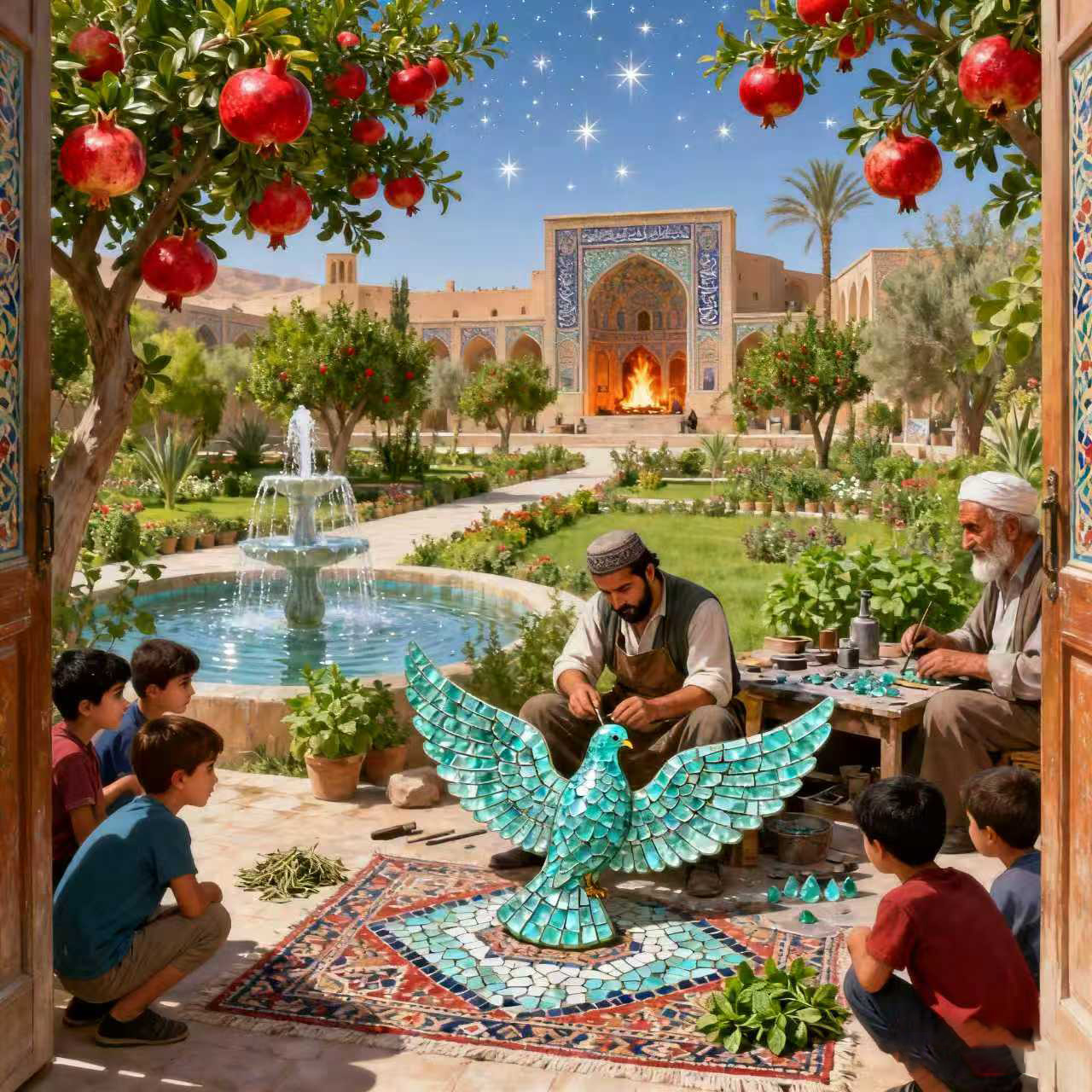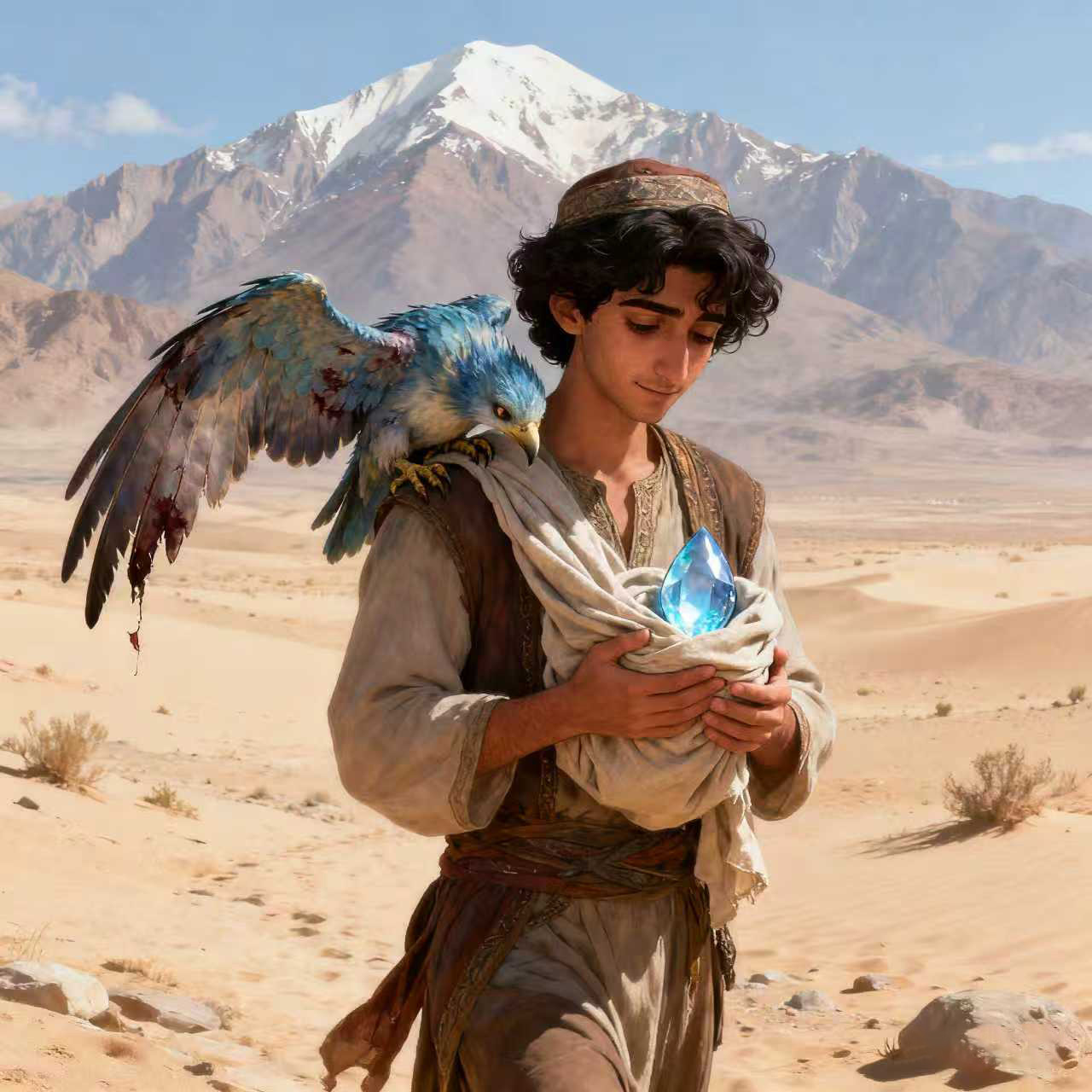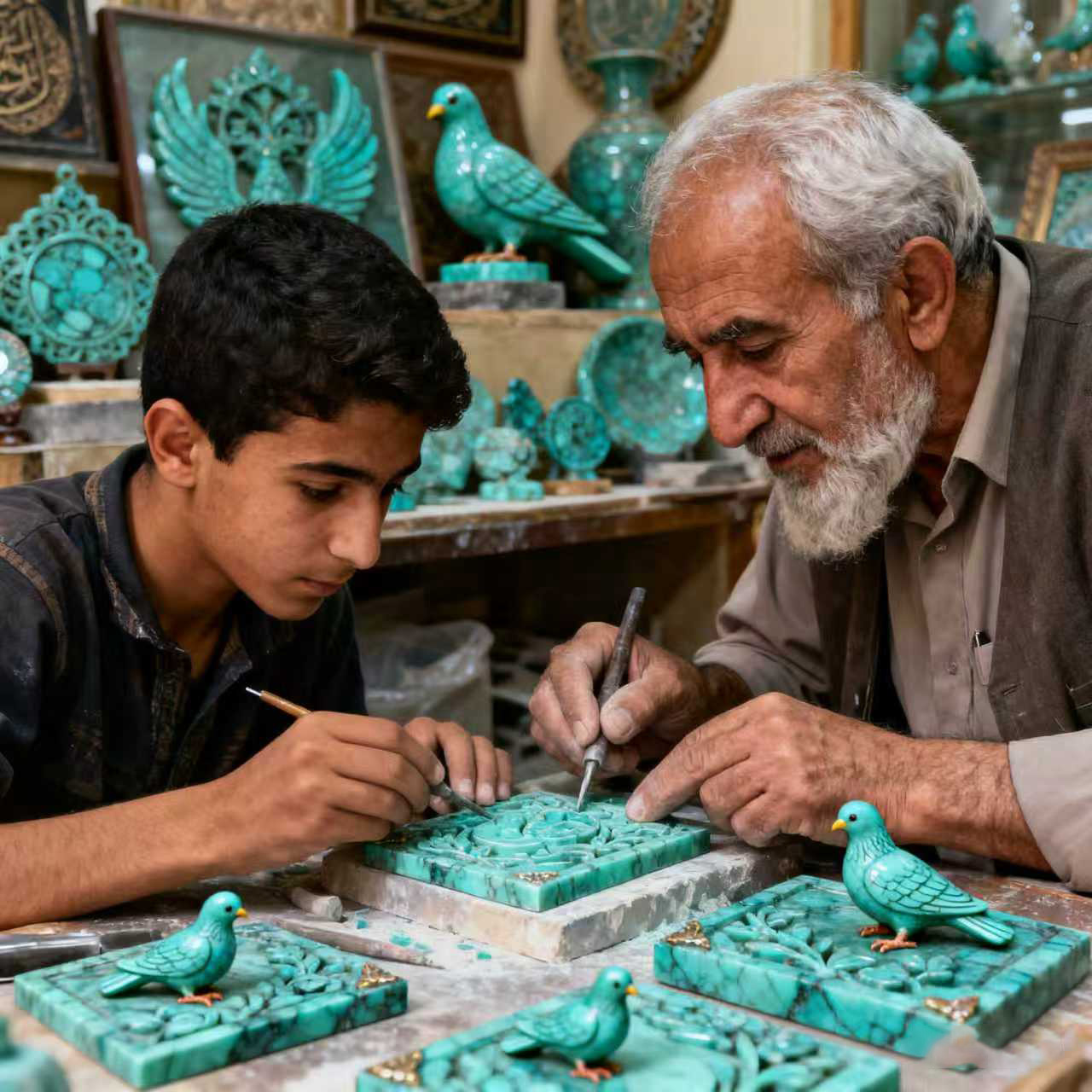+86-13516938893
Menu
global purchase

On the edge of the Persian city of Nishapur, there once lay an oasis beloved by the god Mithra—within its Persian garden, pomegranate trees bore fruits as red as rubies, fountains flowed with water clear enough to reflect starlight, and beside the fire temple deep in the garden lived a turquoise artisan named Nadir. His craftsmanship was the finest in the city: he could carve turquoise (mined from Nishapur itself) into doves with outstretched wings, the patterns on their wings so delicate that light could pass through them; he could also piece together broken turquoise fragments into Persian rug designs, so exquisite that even the most discerning nobles traveled from far away to commission his work.
In those days, everyone in Nishapur loved visiting Nadir’s small workshop—children would squat at the door to watch him polish turquoise, while elders brought dried mint leaves, saying, “Soak this in water when polishing; it will make the turquoise shine brighter.” But seven days before the Mehregan Festival, the oasis suddenly changed: the fountain water turned murky, pomegranate blossoms wilted as soon as they bloomed, and even the sacred flame in the fire temple grew dim, barely able to illuminate the priest’s anxious face.
“The shadow of Ahriman has come,” the priest said, clutching Nadir’s hand. “The ancient texts say only the ‘Tear of the Sky’—a turquoise gem hidden in a crevice of the Alborz Mountains—can drive away the shadow. But the path to that mountain has long been buried by sandstorms; not even birds dare approach it.”
Nadir looked at the withered flowers in the garden, then thought of the children who had crowded around him, asking for “turquoise doves.” Silently, he packed his polishing stones and chisels into a cloth bag: “I’ll go.”

On the day he set off, the entire city came to see him off—elders stuffed leather pouches of flatbread and honey into his hands, and children gave him their drawings of “turquoise doves.” As he reached the edge of the oasis, a gray-feathered dove suddenly landed on his shoulder and gently pecked at his cloth bag. Nadir smiled: “Do you want to come with me? Then I’ll call you Farha—meaning ‘joy’ in Persian.”
The journey across the desert was harder than he’d imagined: the daytime sun scorched the turquoise in his bag until it grew hot to the touch, and the night wind was so cold it numbed his fingers. Several times, his water pouch ran dry, but Farha would fly to distant spots, dip its wings in dew, and return to let the moisture drip onto his lips; when he encountered quicksand, Farha would circle ahead, guiding him to solid ground.
After nine days and nine nights of walking, they finally caught sight of the Alborz Mountains. But the crevice at the mountain’s foot was blocked by a huge boulder. Nadir pushed with all his strength, his fingers scraped raw and bleeding—when his blood dripped onto his turquoise chisel, the tool suddenly emitted a faint glow. Just then, Farha flew toward the crevice and slammed its body against the boulder—miraculously, the boulder slowly shifted, and a streak of blue-green light shone from the crevice: it was the Tear of the Sky. Larger than any turquoise Nadir had ever seen, it glowed like a frozen star, its surface clear enough to reflect the entire sky.
Nadir carefully held the Tear of the Sky as he turned back, but Farha suddenly landed on his shoulder, its wings drooping—its wings had been injured when it crashed into the boulder. Nadir tucked the turquoise into his chest, wrapped Farha gently in his cloth bag, and walked step by step back to Nishapur: “Don’t be afraid. We’ll be home soon.”
He returned to Nishapur just as the Mehregan Festival began. Nadir carried the Tear of the Sky to the fire temple and placed it beside the sacred flame—in an instant, blue-green light spread from the turquoise, illuminating the entire oasis: the fountain water turned clear again, pomegranate trees bore plump fruits once more, and the sacred flame blazed fiercely, filling the air with the scents of mint and pomegranate.

But Farha slowly closed its eyes. Nadir held it in his arms, and as his tears fell onto the Tear of the Sky, a miracle happened—Farha’s image appeared in the turquoise: it had transformed into a turquoise dove with outstretched wings, the patterns on its feathers more beautiful than any Nadir had ever carved.
Later, Nadir carved the Tear of the Sky into a tiny Persian garden. At the center of the garden, he sculpted the turquoise dove, and on its wings, he inscribed a line in Persian: “Light does not dwell only on altars—it lives in the perseverance of ordinary mortals.” This turquoise sculpture was placed in Nishapur’s fire temple, where it can still be seen today.
And from that day on, turquoise artisans in Nishapur adopted a tradition: on the corner of every piece they created, they would carve a small dove. Elder artisans would tell their apprentices, “This is to honor Nadir and Farha—they taught us that even the most ordinary person, if they hold light in their heart, can drive away the deepest darkness.”